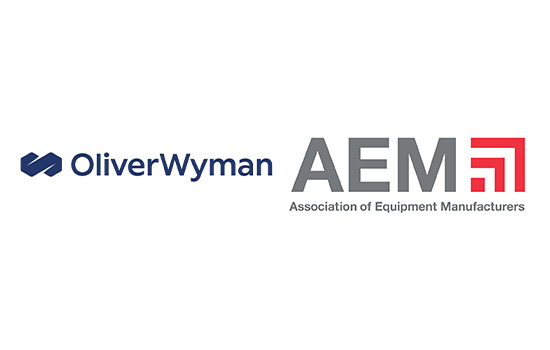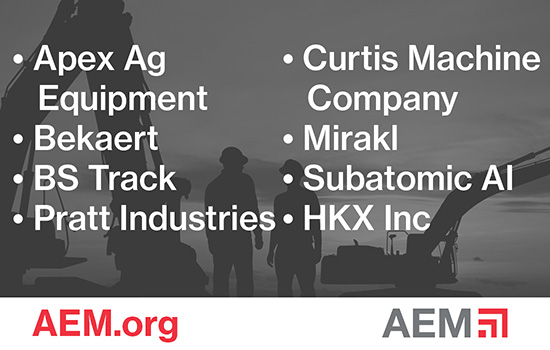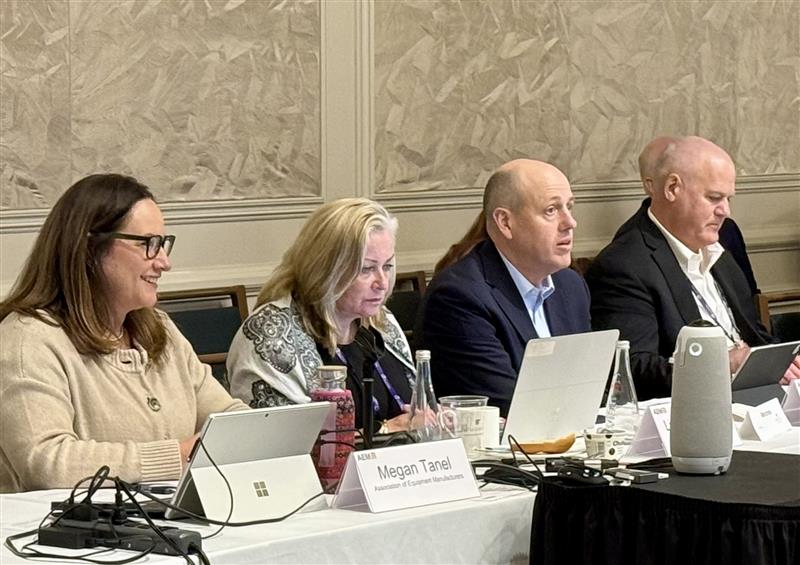By Danny Gavin, AEM Communications Coordinator --
The manufacturing industry’s regulatory environment is constantly shifting to reflect the values of society and industry stakeholders. As more focus is placed on the environment and social issues, it’s inevitable that companies will have to modify their processes and priorities to ensure future profitability and compliance.
Sustainability, Environmental Social Governance (ESG), and regulations all work together to give companies a holistic view of the cost of doing business, and ESG concepts are increasingly impacting the ever-evolving regulatory landscape. Manufacturers work to ensure they are educated on sustainability and ESG concepts, and best practices call for them to continuously evaluate the impact of their operations.
“I hear a lot of people use sustainability and ESG as synonyms – and while they are both incredibly important, there is a difference between the two in both motivation and approach,” said Jamie Wallisch, sustainability expert from AEM member company Assent, Inc. “And, in recent years, manufacturers have been subject to increased obligations related to these concepts.”
Sustainability Vs. ESG
Many don’t consider ESG and sustainability among the most impactful influences in the regulatory environment. However, when defining each of these concepts, it’s easy to see why they bleed into manufacturing industry regulations in the ways they do.
Sustainability refers to the ability for companies to maintain their business indefinitely. It’s an umbrella concept, under which ESG, product compliance, materials trade, and revenue opportunities all fall. There are quite a few business benefits of sustainability (in addition to the societal and environmental benefits.) These include enhanced customer loyalty and access to favorable financing or investment opportunities.
ESG, on the other hand, falls under sustainability. More specifically, ESG assesses the externalities associated with the cost of doing business, looking at societal and environmental topics.
“ESG is the ‘how’ of identifying the non-financial cost of doing business,” explained Wallisch. “It’s a broad scope of issues that are reported alongside company financials, and it helps us understand all of the externalities in our business that impact sustainability efforts.” Many companies are aware of the environmental costs of doing business, like pollution and climate change, or even the social costs like their supply chain and employees. Governance is less so a part of the conversation surrounding sustainability – but is just as impactful, touching on executive compensation, management structure, board accountability, and shareholder treatment.
All in all, ESG and sustainability can be thought of as an investment process. When companies invest in their own structure, people, and communities, they will attract better communities, develop closer relationships with customers, avoid government censure, and will be able to create more economic value in the long term.
Regulatory Compliance
Regulatory compliance bleeds into the concepts of sustainability and ESG, as the number of companies who are subject to mandatory due diligence obligations has exponentially increased, particularly in the last decade.
These regulations are certainly impacting the way that manufacturers do businesses, and can fall under a few different categories:
- Supply chain and forced labor obligations: The Uyghur Forced Labor Prevention Act (UFLPA), Anti-Bribery and Corruption laws and regulations (ABAC), and various supply chain due diligence regulations
- Digitization of data: The Toxic Substances Control Act (TSCA), and PFAS Reporting in the United States and Canada.
- Sustainability reporting: The Directive on Corporate Sustainability Reporting (CRSD) and Restriction of hazardous substances (RoHS).
- Product sustainability and the convergence of product compliance and ESG: Ecodesign for Sustainable Products Regulation (ESPR) and Carbon Border Adjustment Mechanism (CBAM).
“Looking at the whole lifecycle of something, both at the product level as well as the supplier level, and how companies are able to simultaneously improve those areas over time, is what these product sustainability regulations are really getting at,” said Wallisch.
In the end, it’s clear that companies must engage with the stakeholders surrounding their operations, as supply chains can heavily impact sustainability efforts. And, reporting regulations are just beginning – manufacturers that don’t stay on top of sustainability, ESG, and how they tie into regulations, will be scrambling to catch up in the future (likely missing out on crucial opportunities along the way).
Attention AEM members: Want to help AEM raise awareness of the equipment manufacturing industry’s contributions to a more sustainable world? Join our Positive Perceptions Workstream.
The Products of the Future are Sustainable
It’s clear that sustainability is here to stay, despite the ebb and flow of its perceived popularity, given its integration into the regulatory landscape. While some companies feel burdened by increasing due-diligence obligations, there are numerous benefits to sustainable operations. Increased innovation, access to favorable funding and investment opportunities, enhanced customer loyalty, and cost-savings are all incentives to keep sustainability top-of-mind.
In the future, regulations will continue to incorporate ESG and sustainability. Wallisch shared a few insights and suggestions to ensure manufacturer’s long-term success going into the future:
- Best practice becomes legal requirement: It’s no longer just best practice to incorporate sustainable design principles – it’s now included in regulatory requirements.
- Disclosure is the new normal: Laws like ESPR and commercial pressures require manufacturers to disclose product sustainability information.
- Sustainable design provides future access: Ensure long-term access to markets by designing in, and providing information about, sustainable aspects of products.
Reporting obligations and data collection requirements are just beginning, and manufacturers who wait to act risk hurting stakeholder relationships, process inefficiency, and visibility gaps. Manufacturers don’t have to tackle everything today, but it's important that they assess their operations to ensure long-term profitability and compliance.





